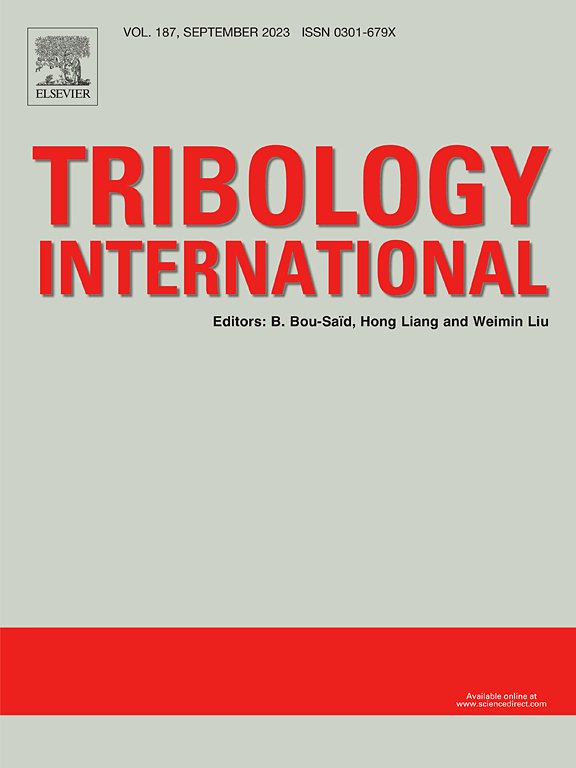Application of finite element analysis and computational fluid dynamics in machining AISI 4340 steel
IF 6.1
1区 工程技术
Q1 ENGINEERING, MECHANICAL
引用次数: 0
Abstract
AISI 4340 is a low-alloy steel with moderate carbon content that has garnered significant attention due to its remarkable properties, including high strength, toughness, and heat resistance. These characteristics make it highly desirable across industries such as construction, automotive, and aerospace. However, machining AISI 4340 poses substantial challenges due to the complex thermomechanical loading and high strain rates involved, which generate significant heat. This heat leads to accelerated tool wear, diminished productivity, and poor surface quality. High-speed machining (HSM) processes have shown promise in improving material removal rates and surface finish quality. However, the elevated temperatures in the cutting zone remain a critical concern, particularly in terms of tool durability. In response to these challenges, the development of virtual models has gained importance for reducing research time and costs. This review synthesizes relevant literature from the past decade, focusing on the application of Finite Element Analysis (FEA) and Computational Fluid Dynamics (CFD) in machining processes involving AISI 4340 steel. It highlights the critical role of simulation techniques in optimizing machining processes, addressing key challenges, and improving overall operational efficiency and precision. For instance, FEA is extensively used for chip formation and machining response prediction, requiring careful consideration of cutting parameters and meshing quality to ensure accuracy. Meanwhile, CFD studies have primarily explored low cutting speeds and minimum quantity lubrication (MQL) systems, but not under high-speed cutting conditions. Most studies conducted have utilized FEA and CFD separately. Therefore, this review examines current trends and future directions, including the integration of CFD and FEA models for high-speed machining applications. Notably, most research on AISI 4340 machining has concentrated on improving cutting tools, optimizing cutting parameters, and advancing modelling techniques under dry machining conditions, but limited attention to coolant-assisted machining or Minimum Quantity Lubrication (MQL) application. Another identified research gaps, such as the limited exploration of integrated CFD-FEA models and high-speed machining under MQL conditions, provide avenues for future improvements in machining AISI 4340 steels.
有限元分析和计算流体力学在AISI 4340钢加工中的应用
AISI 4340是一种碳含量适中的低合金钢,由于其卓越的性能,包括高强度、韧性和耐热性,已经引起了人们的极大关注。这些特点使其在建筑、汽车和航空航天等行业中非常受欢迎。然而,由于复杂的热机械载荷和高应变率,加工AISI 4340带来了巨大的挑战,这会产生大量的热量。这种热量导致加速刀具磨损,降低生产率和表面质量差。高速加工(HSM)工艺在提高材料去除率和表面光洁度方面显示出希望。然而,切削区的高温仍然是一个关键问题,特别是在刀具耐用性方面。为了应对这些挑战,虚拟模型的开发对于减少研究时间和成本变得越来越重要。本文综述了近十年来的相关文献,重点介绍了有限元分析(FEA)和计算流体动力学(CFD)在AISI 4340钢加工过程中的应用。它强调了仿真技术在优化加工工艺、解决关键挑战和提高整体操作效率和精度方面的关键作用。例如,FEA广泛用于切屑形成和加工响应预测,需要仔细考虑切削参数和啮合质量以确保精度。同时,CFD研究主要针对低切削速度和最小量润滑(MQL)系统,而不是高速切削条件。大多数研究都是分别使用FEA和CFD进行的。因此,本文综述了当前的趋势和未来的方向,包括CFD和FEA模型在高速加工应用中的集成。值得注意的是,大多数关于AISI 4340加工的研究都集中在改进切削刀具、优化切削参数和推进干式加工条件下的建模技术上,但对冷却剂辅助加工或最小量润滑(MQL)应用的关注有限。另一个确定的研究空白,如在集成CFD-FEA模型和MQL条件下的高速加工方面的有限探索,为未来加工AISI 4340钢提供了途径。
本文章由计算机程序翻译,如有差异,请以英文原文为准。
求助全文
约1分钟内获得全文
求助全文
来源期刊

Tribology International
工程技术-工程:机械
CiteScore
10.10
自引率
16.10%
发文量
627
审稿时长
35 days
期刊介绍:
Tribology is the science of rubbing surfaces and contributes to every facet of our everyday life, from live cell friction to engine lubrication and seismology. As such tribology is truly multidisciplinary and this extraordinary breadth of scientific interest is reflected in the scope of Tribology International.
Tribology International seeks to publish original research papers of the highest scientific quality to provide an archival resource for scientists from all backgrounds. Written contributions are invited reporting experimental and modelling studies both in established areas of tribology and emerging fields. Scientific topics include the physics or chemistry of tribo-surfaces, bio-tribology, surface engineering and materials, contact mechanics, nano-tribology, lubricants and hydrodynamic lubrication.
 求助内容:
求助内容: 应助结果提醒方式:
应助结果提醒方式:


